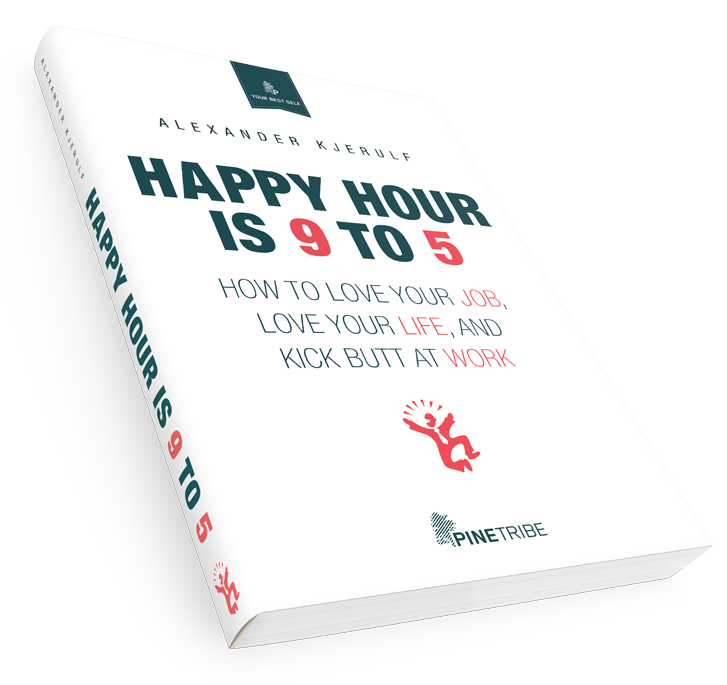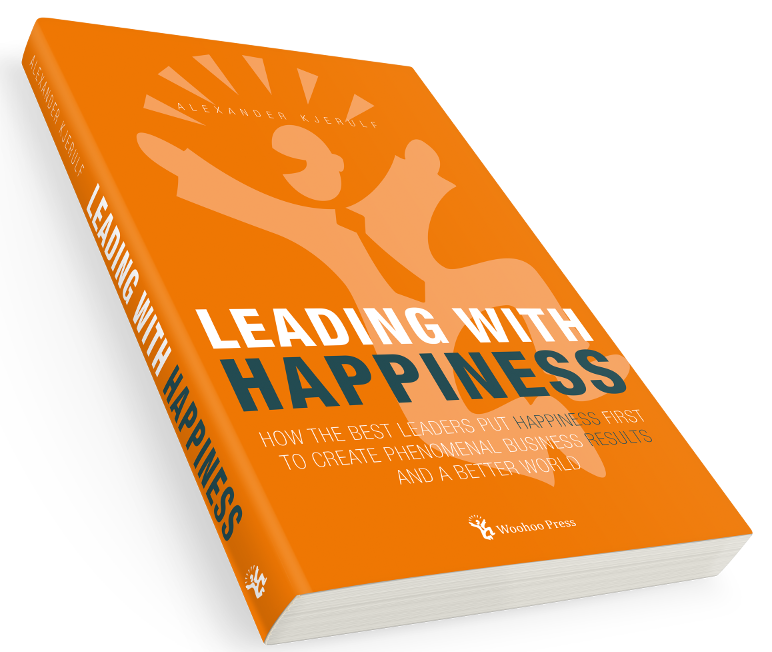I have a very simple question for ya:
Why do you work?
If you’re wondering how the heck to pronounce “arbejdsglaede” (the Scandinavian word for happiness at work) you’re not alone:
Yeah, Danish is a horrible language.
Get the right pronunciation (and find out what arbejdsglaede means) at www.whattheheckisarbejdsglaede.com.

Sometimes the simplest things work the best, and this week’s happiness tips is one of the simplest we know:
Before you leave work, make a list of 3 things that made you happy at work today. It can be big things or small things, that doesn’t matter, just list 3 things that you enjoyed about work today.
It could be things like:
We suggest making this list daily for a week and then switching to doing it only every Friday, where you list 3 things that made you happy that week. A study showed that making the list weekly rather than daily actually works better – possibly because you don’t tire of it as quickly.
This is one practice that seems almost too simple to work, but one study showed that if you do this for two weeks, you will be measurably happier for 3 months afterwards.
The reason why this works so well is probably that it helps us to actually remember the good things that happen to us during the work day. Normally our brains are subject to the phenomenon called negativity bias which means that we’re better at remembering bad experiences. If you’ve had 10 good experiences at work and one bad one, there’s a good chance that you’ll go home thinking about that one bad experience, which will make the day feel bad, though it was actually mostly a good day.
Pro tip: You can also apply the same tip at home. I’d just finished doing a speech for a client once, when a lady came up from the audience. She told me that she’d attended a speech of mine a few years earlier and that she’d implemented this tip with her family. Every evening around the dinner table, every person (herself, her husband and the two kids) have to list three things that made them happy that day. At first they found it to be a little weird, but now it’s something they all look forward to and she told me that her kids collect good experiences throughout the day that they can tell about at dinner.

I just wanted to brag for a second. Over the next few months, I’m booked for speaking gigs in:
Woohoo!
Read more about our speaking offerings or book us to speak in your organization here.

I’ve done it myself once. I was working really hard as a developer, when one seriously under-qualified manager called me unprofessional in a meeting. I stood up, left the meeting and resigned the next day.
Everything worked out fine for me – I went out on my own and became an independent consultant and went on from there to co-found an IT consulting company where we treated people right – and now I make people happy at work :o)
What about you?
I have a suspicion that if you’re reading this, you’re thinking of quitting.
In that case, remember that March 31st is International Quit Your Crappy Job Day. Check out the site – it is packed with information for anyone considering whether or not to quit their job.
Our brand new stop-motion animated video about happiness at work just passed 5,000 views. You can watch it at here AND sign up to get a weekly email with our best happiness tips.
What The Heck Is Arbejdsglaede!?
UPDATE: And 24 hours later we’re at 6,500 views. Woohoooooo :o)
UPDATEx2: And we’ve now passed 8,500!!!
UPDATEx3: 10,000!!!!!!!!!
 I was interviewed for this Forbes article on how to use negative feedback at work to your advantage which I think turned out really well.
I was interviewed for this Forbes article on how to use negative feedback at work to your advantage which I think turned out really well.
Basically, negative feedback is no fun but we need to know what we do well AND what we can do better. Unfortunately, very few workplaces have a good feedback culture.
What do you do when you’re criticised at work? Have any tips to share? Write a comment!
If your company is happy, why not put it right on the door:

This is the door to one of the meeting rooms (called San Francisco) at Serbian IT company Vega IT Sourcing.
Fantastic.

The beginning of a new year is a great time to take stock of your work life. Did everything going the way you wanted it in 2012? Were you happy or unhappy at work? What would you like to change?
Unfortunately, most people look back and think almost exclusively in terms of everything that went wrong. The things they should have done. They goals they ought to have achieved. The progress that didn’t come.
We think you can achieve much more by turning that around 180 degrees, so here’s our suggestion for a little new years exercise in happiness at work. Think back at your work life in 2012 and answer the following 10 questions. It works best, if you take some time to do it and if you write down the answers.
And last but not least:
10. What will you specifically do to become happier at work in 2013?
Have fun – and I wish you a very happy 2013 at work!
Rosa Finnegan is 100 years old and still works in a factory. In this hilarious video, she explains why she is some 30 or 40 years past retirement age but not retired:
Rosa works at needle and tubing manufacturing firm Vita Needle in Needham, Mass. The company is known for its elderly workforce. The average worker is 74 years old.
PBS did a report on them – watch it here.
There are a couple of great things here. First of all, I think it’s fantastic that some companies are figuring out that people past the age of 55 are also great workers. And secondly, I love the idea that you can be working (and happy about it) way past retirement age.
When you think about it, retirement really only makes sense if you don’t like your job. If your job gives you purpose, energy and happiness why would you just stop? It’s part of an old mindset that’s been called Slave, Save, Retire. You work really hard at a job you hate, struggling to save enough money that one day you won’t have to work any more.
I honestly don’t see myself ever retiring – at least not as long as I can still find work I enjoy. What do you think?
And here’s another hilarious clip with Rosa:
“I can’t believe it – a newsletter actually worth reading!”
– Subscriber
Over 6,000 people subscribe to our newsletter with tons of tips about happiness at work.

“It’s very, very good. It’s incredibly well written, full of insights, and there are exercises to improve your own happiness at work. You can’t ask for more than that!”
– David Maister, author of Practice What You Preach

“What an inspiring book. Every leader should read it. This type of leadership has been integral to our success and I know it will boost your results too.“
– Garry Ridge, CEO WD-40 Company
Over 6,000 people already get our free newsletter with useful tips, videos, links and articles about happiness at work.
Subscribe to our newsletter here.